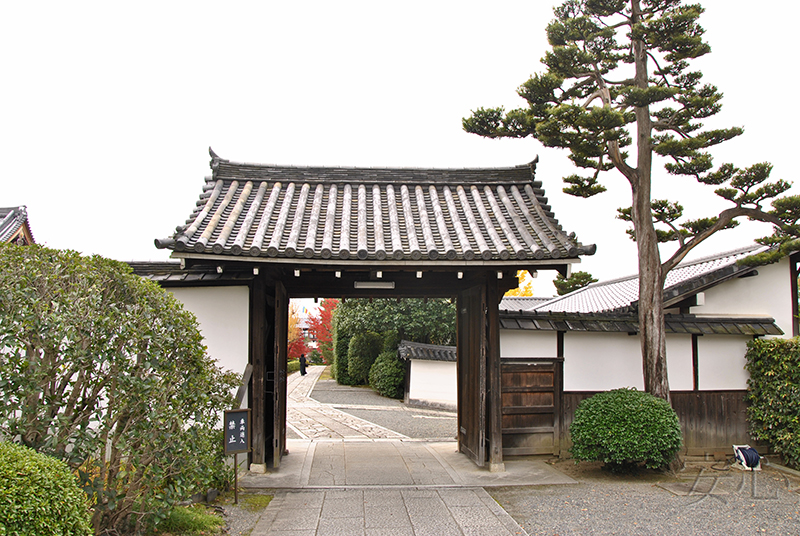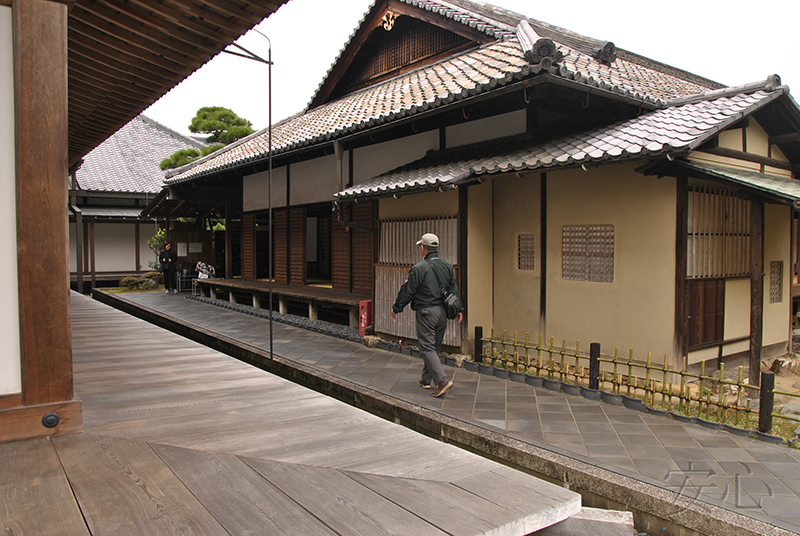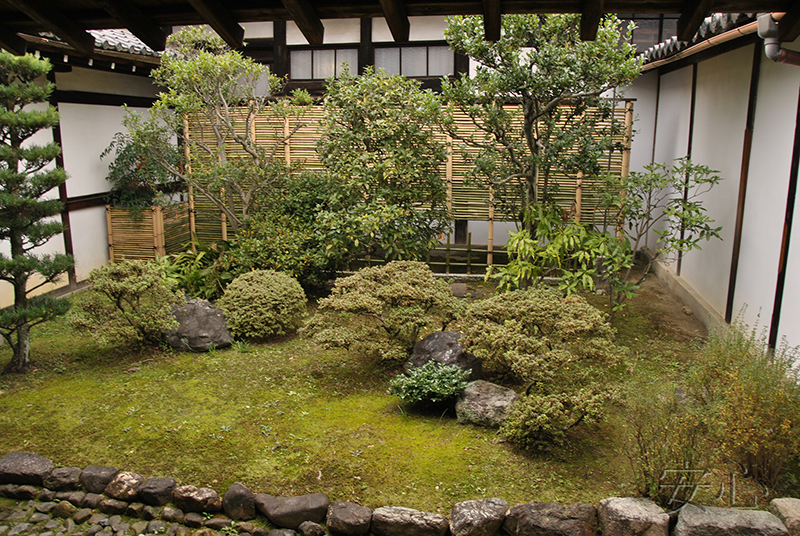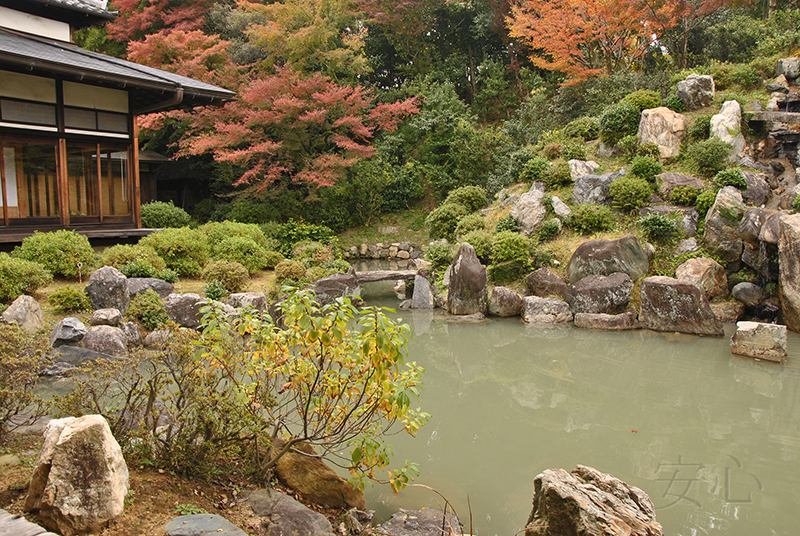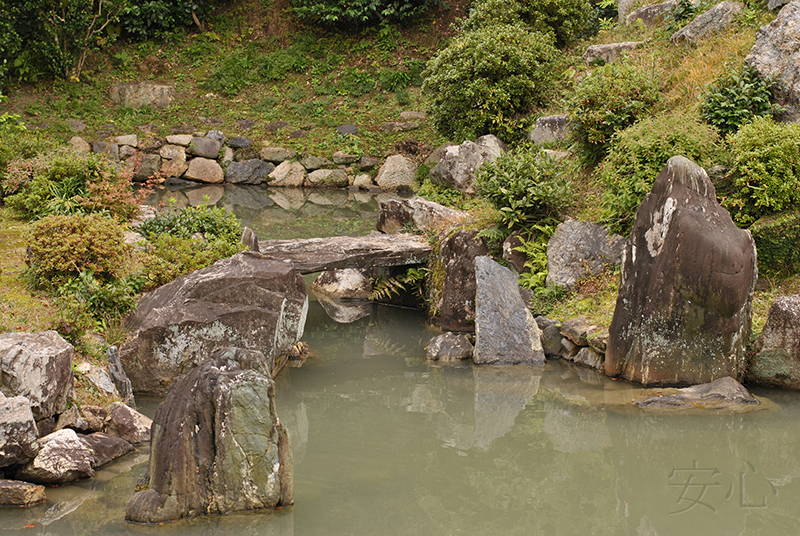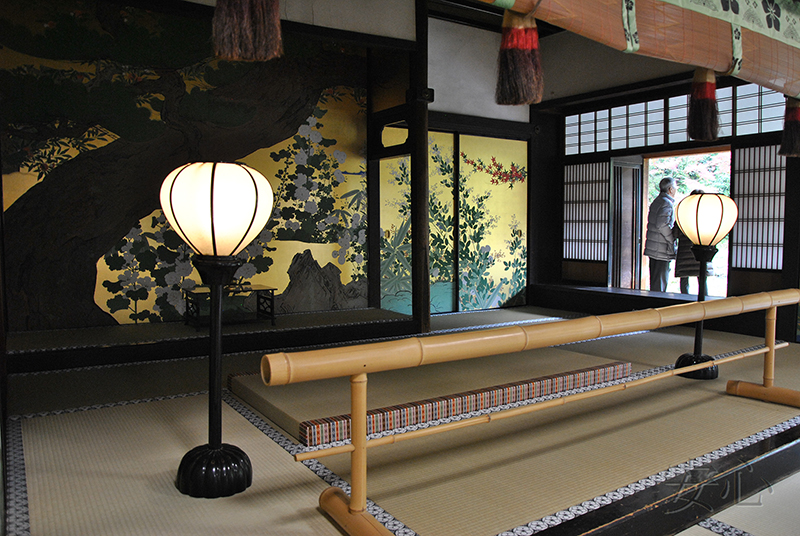
Chishaku-in Temple Garden, Kyoto
Chishaku-in Temple was moved from Wakayama Prefecture in 1598. It was then rebuilt in 1677 and again extensively renovated after a fire in 1947. Chishaku-in is the main temple of the Shingon sect and manages approximately three thousand temples throughout the country belonging to the Chisan school of the Shingon sect of Buddhism.
The temple is famous for its garden, created in the 17th century. However, there are many other places on its territory that deserve attention.
We came to this place in the fall, at the height of the red maples. Just outside the main gate, a little to the left, is the residence of the chief priest with a nice garden on both sides of the path.
There is a long wide road to the right. On the left is the main hall of Ko-do. It is behind it that the garden we are interested in is located. However, we moved on and decided to see the territory around.
There are many temple buildings, and often in front of them there are small well-kept gardens. Here's another one, on light gravel there are several green islands with trees and trimmed bushes.
And in this place I liked the design of the slight rise.
There is a small pond near the Myoden Hall. It looks very natural. Only the stones laid along the shore of the pond and installed inside it indicate that the pond was created by man.
The stone staircase leading up is very picturesque, especially surrounded by autumn maples.
After wandering around the temple grounds for a while, we returned to the Kyo-do Hall. Important rituals, ceremonies, and trainings take place here. On both sides of the path there are tall lanterns, as if emphasizing the importance of what is happening here.
We went left, turned the corner, and saw a wonderful garden. At the end of the engawa, on the stones, there is an long bowl with the purest water. There is also an impressively sized bell suspended here.
The main road from the entrance leads to the right, to the shoin.
The garden is already visible from afar, but you can get it only from the building. We turned left in front of the tea house, and then, at the end of the road, turned to the right.
There are also gardens inside, small dry landscapes enclosed between buildings. In the first garden, light gravel plays the role of water flowing under the bridge and spilling in front of the viewer. Water washes three islands. In the foreground lies a stone acting as a rock.
In the center, behind the stone bridge, there is a small rock garden.
On the left is a large island with a mature pine, maple, and several shrubs grow. A little further from it there is another island, very small, on which one small tree fits. A very interesting arrangement of stones on a large island. Large ones in the background and very small ones in the foreground, this combination evokes associations with a rocky coast.
On the right you can see a passage, behind it is another small garden.
It is adjacent to the reception hall, built in the Shinden style. Meetings of honored guests take place here. The building was built in 1958 and features wall paintings by Insho Domoto, a master artist from the Kyoto art community. Many paintings are displayed in the hall, but ordinary visitors can see them only during the annual meeting dedicated to admiring the moon, when a special showing is held.
There are also several small tsubo in the courtyard. Garden with a well and a stone bowl.
And another one in front of the bamboo screen.
There is also an opportunity to get closer to the rock garden and to see it from a different perspective. There is no longer any plants here; the entire composition is built exclusively by stones and gravel. The coarser gravel creates the illusion of a rocky island in the sea (the finer fraction) from which majestic cliffs emerge.
Well, now, finally, we can return to the shoin, a hall with a veranda for admiring the garden, which is known as “Sen no Rikyu’s beloved garden.” Initially, on the site of Chishaku-in there was another temple, Shonzen-ji. The famous garden master Kobori Enshu created a garden here in 1591. Since in his youth he was a student of Sen no Rikyu (the famous tea master who developed the classical tea ceremony), he dedicated this garden to the memory of his teacher, making it in Rikyu’s taste. In 1674, already at the Chishaku-in Temple, the garden was converted into a walking garden, but the river, hills and waterfall remained the same. The transformations took place under the leadership of the seventh chief priest of Chishaku-in, Sojo Uncho.
The artificial hill opposite the shoin symbolizes China's Lushan Mountain, and the river flowing between them symbolizes the Yangtze River.The hill is covered with clipped azaleas and Japanese maples grow in the background.
In the center of the hillside there is a waterfall. It consists of several rapids and looks very picturesque. At the top there is a stone bridge. A stepping stone path leads to it along the slope. However, only temple servants and gardeners can walk on it; visitors do not have access to the hill.
The right side of the river flows past the tea house and disappears into the thickets. Here we see two bridges, one is stone, with supports in the middle, the other is wooden.
The left side of the garden is good seen from the entrance. From here you can clearly see the pagoda standing on the top of the hill, a group of azaleas formed into a kind of rectangle, which contrasts with the rest of the bushes of rounded shape. It is from this place that you can see the stepping stone path.
However, the left side can only be seen completely from the shoin. Just like on the right, the river disappears after turning the corner of the reception hall. It seems that it is endless!
There is also a stone bridge at the end of a stepping stone path over the hill. If you zoom in the photo, you can see the steps.
There is also something to see inside the temple. Thus, there are wall paintings of maple and cherry trees painted by Tohaku Hasegawa and his son. The screen in the Four Seasons Hall is a depiction of the four seasons of Japan, created using only black ink and dedicated to the temple by artist Toshio Tabuchi.
The garden has an atmosphere of silence and meditative calm, creating a complete feeling of merging with nature. And even though there were quite a lot of people in the garden at that moment, it seemed as if we were there alone, alone with this stunning garden.
Garden Information:
Address: 605-0951, 964 Higashikawaracho Higashiyama Ward, Kyoto
Opening hours: from 9.00 a.m. to 4.00 p.m.
anshin©2011All rights reserved. When using the materials of the site, reference is obligatory.
Proposals for co-operation, as well as comments and suggestions on the site please send to the address: anshinsad@gmail.comtel: +7 (965) 121-80-60, 10am-20pm
